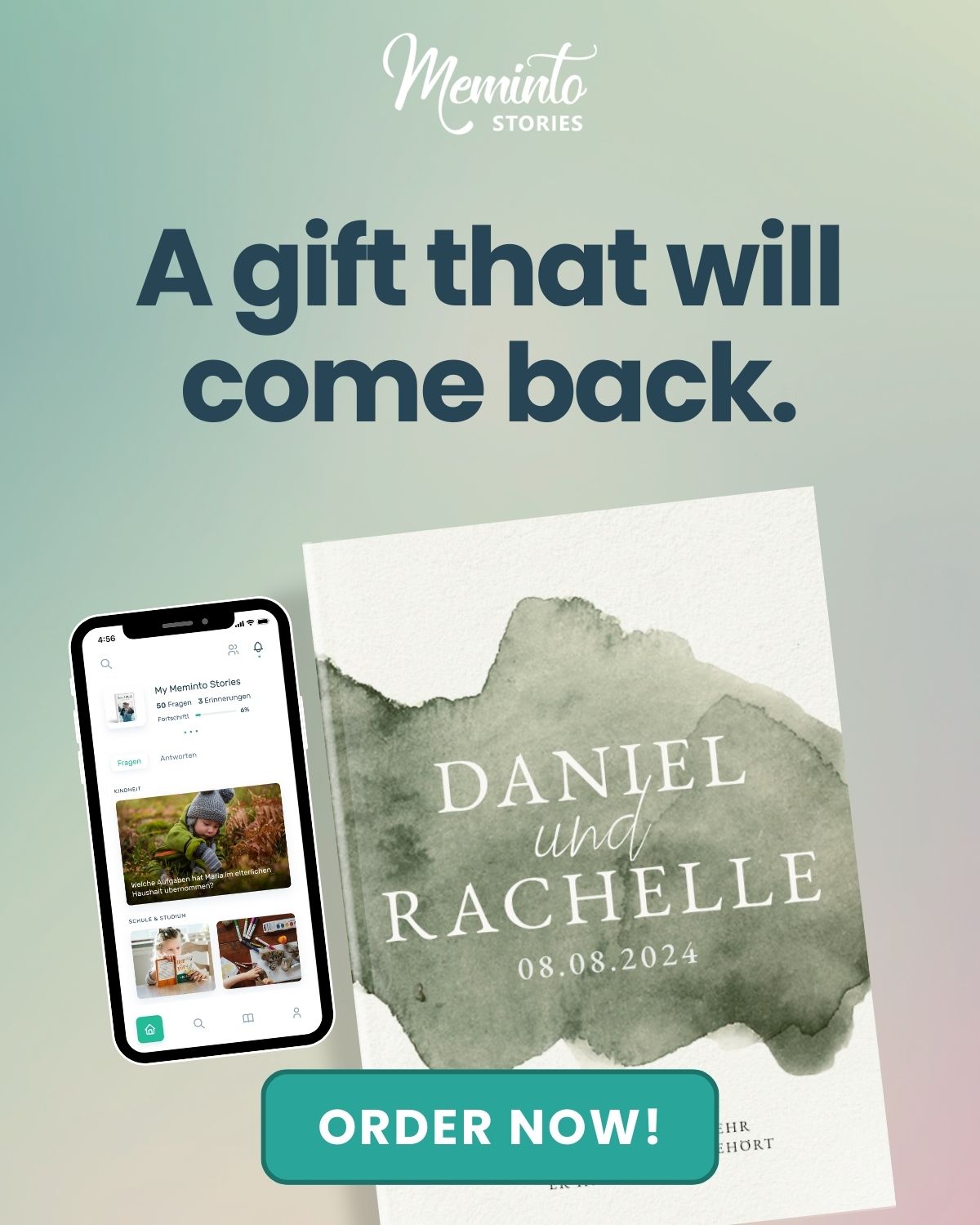Family stories have been passed down through generations, shaping our sense of identity and belonging. From ancient oral traditions to modern-day memoirs, these stories hold the power to connect us to our roots. Studies by researchers like Dr. Marshall Duke even suggest that children who know their family’s history are more resilient, grounded, and confident.
Writing a family narrative helps you put together the moments, emotions, and values that define who you are as a family. It’s a way to make sense of the past, honor the present, and share your story with future generations. Whether it’s tales of triumph or hardship, your family has a story worth telling.
So, how do you begin to write yours? In this article, we’ll walk you through what a family narrative is and how you can start writing one.
Let’s get started!
Key Takeaways
- Writing a family narrative helps preserve your family’s legacy. It ensures future generations can connect with their roots and understand their heritage.
- The process of writing a family story is personal and reflective. It allows you to explore meaningful moments and emotions that bring depth to your family’s journey.
- Meminto provides helpful tools and prompts, making it easier to organize your thoughts and create a structured, lasting family narrative without feeling overwhelmed.
What is a Family Narrative?
A family narrative is the story of a family’s shared experiences, history, and values, often passed down through generations. These narratives serve to connect you to your past, offering a sense of identity and belonging. When writing one, you are not just chronicling events. You go deep into illustrating the emotional and moral lessons learned from those experiences. It highlights not only milestones but also the resilience, love, and struggles that define the family’s character over time.
Family narratives can take many forms, like oral storytelling, memoirs, or even digital recordings. They often reflect the family’s values, reinforcing what is important to them. By learning these stories, you understand your family’s place in the larger context of history. You get to know how past generations dealt with adversity, which can build your resilience and a stronger sense of self.
The Glass Castle by Jeannette Walls is a well-known example of a family narrative. Walls recounts her childhood, marked by poverty, instability, and her parents’ eccentric behavior. The story unfolds as a complex blend of hardship and love, showing both the family’s vulnerabilities and their strength.
Despite the struggles, the narrative explores how Walls and her siblings found ways to overcome their difficult upbringing. Her memoir highlights the transformative power of family narratives. It shows how they can offer meaning and perspective, even in the face of adversity.

Why Should you Write a Family Narrative?
Writing a family narrative is one way to help you reflect on who you are as part of a greater whole and pass those stories down to future generations. Since you are planning to write one, you should know why it’s significant.
Here are some reasons why writing a family narrative matters:
- Preserve Family Memories: Your family’s story is unique, filled with moments that define who you are. When you write it, you ensure that these precious memories, whether they’re about joyous celebrations or overcoming hardships, are preserved for future generations.
- Strengthen Family Bonds: Sharing family stories helps bring you closer together. It builds a deeper understanding of each other’s experiences and creates a sense of unity, even across generations.
- Gain Perspective on Your Own Life: As you reflect on your family’s past, you gain a better understanding of your own journey. By connecting the dots between your ancestors’ choices and yours, you may discover patterns, lessons, and inspirations that help you grow personally.
- Celebrate and Honor Your Ancestors: Writing a family narrative is a way of paying tribute to those who came before you. It allows you to honor their struggles, sacrifices, and triumphs. That ensures their stories are not forgotten but celebrated as an important part of your heritage.
- Create a Legacy: Your family’s narrative is a gift that you can pass down. It is a living, breathing legacy that future generations can look to for inspiration, guidance, and connection to their roots.
Now that you understand why writing your family narrative matters, let’s guide you on how to write one.
Step-by-Step Guide to Writing a Family Narrative
Writing a family narrative is really just about telling your family’s story in an honest, meaningful way. You don’t need to be a professional writer. Just follow a simple structure and let the emotions, details, and experiences flow naturally.
Here’s a step-by-step guide to help you get started:
Decide on a particular story or theme
The first step in writing your family narrative is to choose a specific story or theme. This could be a defining moment in your family’s history, a particular challenge you faced together, or a cherished memory that highlights your family’s values. Selecting a theme helps you focus your narrative and gives it direction.
When deciding, think about what you feel comfortable sharing. Think about stories that evoke strong emotions. These stories often carry the most meaning and can have a profound impact on your readers.
Consider asking yourself questions like, What experiences shaped my family? What lessons have we learned? What stories do I wish to share with future generations? This initial decision will set the tone for your narrative and guide you as you write your family’s story.
Choose Whether to Write about a Single Events or Chronicle
Once you’ve decided on a story or theme, the next step is to determine the scope of your narrative: will you focus on a single event or create a broader chronicle of your family’s history? Each approach has its own advantages and can evoke different emotions in readers.
Single Event
Focusing on a specific event allows you to go into the details, emotions, and impact of that moment. This could be a wedding, a family reunion, a migration story, or even a challenging time, like overcoming a crisis. A single event can create a powerful narrative that readers can relate to. It presents the essence of your family’s experience in a vivid and engaging way.
Chronicle
On the other hand, if you choose to write a chronicle, you’ll take a broader view of your family’s journey over time. This approach can encompass multiple stories, themes, and characters, giving a fuller picture of your family’s history and how it has evolved. A chronicle can connect past events to present-day life, highlighting how experiences shape identities across generations.
Ultimately, the choice depends on what feels most meaningful to you. Whichever you decide, remember to keep your family’s voice and emotions at the forefront.
Write Down Important Details about the Story you Want to Share
Now that you’ve chosen your story or theme, gather the important details that will bring your narrative to life. This will help you capture the essence of the experience and ensure your readers can fully engage with the story.
Here’s how to approach it:
- Identify Key Characters: Think about who was involved in the story. Write down names, relationships, and any relevant traits that define each character. What roles did they play, and how did their actions influence the events?
- Set the Scene: Describe the time and place where the story unfolds. Consider sensory details like what did it look like, sound like, or smell like? Setting the scene helps readers visualize the context and immerse themselves in the narrative.
- Highlight Significant Events: Outline the major events that occur in your story. What were the turning points or key moments that shaped the experience? Be specific about actions, decisions, and emotions that were involved.
- Capture Emotions and Reactions: Reflect on how you and others felt during the events. What emotions were present? Was it joy, fear, love, or frustration? Including these emotional details will make your narrative more relatable and impactful.
- Consider the Aftermath: Think about how the events affected your family and shaped your lives moving forward. What lessons were learned, and how did they influence future decisions or relationships?
Writing down these important details will create a solid foundation for your narrative, making it easier to weave everything together later. It will help you focus on what matters most in your story.
Write the Stories Surrounding these Important Details
With the key details of your narrative in hand, the next step is to bring those moments to life by arranging them into a meaningful story. Focus on creating a vivid and emotional retelling of each event, highlighting the characters, their actions, and the emotions involved.
As you write, allow each event to unfold naturally. Bring out the personalities of the people involved and use descriptive language to set the scene. What were they feeling? How did they respond? Explore the emotions, whether they are joyful, tense, or bittersweet, and let them guide the tone of the narrative.
At the same time, show how these moments connect to the larger theme or story you’ve chosen. By linking the details to a broader message, you give your narrative depth and significance.
Remember, the goal here is not just to recount what happened but to tell a story that captures the essence of your family’s experiences. The more personal and specific you can be, the more powerful and relatable your narrative will become.
Arrange the Events to Flow Properly
Once you’ve written the individual stories around the key details, arrange them in a way that creates a smooth, engaging narrative. You want to shape the flow so that each event naturally leads into the next, delivering the emotional impact you want to convey.
Start by organizing the events chronologically if your story spans a long period or follows a natural sequence. The chronological approach is often the easiest way to ensure clarity. It helps readers follow the progression of your family’s journey from one moment to the next.
However, if your story is centered around a specific theme or lesson, you might choose to organize events thematically instead of by time. This can allow you to highlight recurring values or struggles within your family.
As you arrange the events, pay attention to the emotional pacing. Ensure there’s a good balance between intense, pivotal moments and lighter, more reflective parts of the story. This contrast helps keep the reader engaged and allows time for the deeper emotional moments to land. Make sure the story builds up to key moments and that the resolution feels satisfying. The goal is to leave whoever reads with a sense of closure and understanding of your family’s journey.
Take a Break
After putting so much effort into shaping your family narrative, take a break. You need it so you can return with fresh eyes and a clearer perspective to edit the narrative. When you come back, you’ll be able to see the story from a different angle, notice areas that need improvement, and refine the emotional tone to make sure it flows well.
Taking time off also gives your mind a chance to process what you’ve written, which can help spark new ideas or reveal details you may have overlooked. It may be for a few hours or a couple of days, but that break will help you approach the next stage of your narrative with renewed energy and creativity.
Do the First Reading and Edit the Story to Make Sense
After your break, do the first reading of your family narrative. As you read, focus on how the story flows, ensuring it makes sense from beginning to end. Pay close attention to any areas that feel unclear, disjointed, or lacking in emotional depth. This first read-through is about getting a sense of the overall structure, not just the details.
Look for inconsistencies, like if the timeline jumps around confusingly or if certain characters seem underdeveloped. You might notice places where the emotional weight of an event needs to be heightened, or moments where additional context would make the story stronger. Don’t hesitate to cut out sections that feel unnecessary or rewrite parts to make them clearer or more impactful.
Your goal with this first edit is to polish the narrative into something that flows smoothly and feels authentic, making sure it stays true to the family’s voice and the message you want to convey. Once you’ve edited for structure and clarity, you’ll be one step closer to a refined, powerful family narrative.
Edit Over and Over!
Writing a family narrative is a deeply personal process, so it deserves careful attention at every stage. After your first round of edits, don’t stop there. Great stories are written through multiple revisions. Each time you revisit your narrative, you’ll discover new ways to improve the flow, enhance descriptions, or sharpen the emotional impact.
With each edit, focus on different aspects. One read might be for clarity and structure, another for refining language and tone, and yet another for ensuring that every event contributes meaningfully to the overall story. This repetition helps transform a rough draft into a polished, captivating narrative.
The more you revisit your story, the better you’ll be able to shape it into something that truly represents the essence of your family’s journey. It’s a process that takes time and patience, but each revision brings you closer to a story that honors your family’s legacy.
There you have it! Now, you can get started on writing your family narrative with this simple structure.


Write your Family Story with Meminto
If you’re eager to write your family narrative but don’t know where to begin, Meminto offers an excellent solution. With its range of products, from life books and memoirs to family books, Meminto provides a personalized, guided experience to help you capture your family’s story beautifully.
Meminto offers structured prompts and questions that guide you through the process of writing your family’s story, making it easier to gather your thoughts and memories. These prompts ensure that you cover all the important aspects, from childhood moments to life-changing events, without feeling overwhelmed by the blank page. Whether you want to write a detailed memoir, a life book, or a family-focused narrative, Meminto helps you tailor the story to your needs.
With Meminto, you can focus on storytelling while the platform helps with organization, structure, and even printing your finished family book. It’s a simple, effective way to get started on preserving your family’s legacy for future generations.
So, how do you use Meminto to write your family narrative?
How to Write a Family Narrative with Meminto
- Go to https://meminto.com/product/family-book/ and click on the “Start Now.”

- Select who will author the book by choosing either “I Will” or “Someone Else Will.”
- Choose the number of pages and input any other options you prefer. This will generate your total, then click “Add to Cart.”
- Type in your shipping details and select how you’d like to pay. If you have a promo code, apply it to get a discount.
- Review and Confirm your order, then track your delivery status from the checkout page.
- Go to your Email for confirmation and activation code, then visit memin.to/register.
- Enter your personal information, activation code, and password. Click “Sign up for Meminto” to start writing your story.
Personal details - Choose your language preference between English and German, then set the day you’d like to receive memory prompts.
- Personalize your memory book by choosing your design preferences.
- Customize the book to fit your needs.
11. Watch the instructional video below so you can get better guidance on how you can use the Meminto app.
You are currently viewing a placeholder content from YouTube. To access the actual content, click the button below. Please note that doing so will share data with third-party providers.
More Information
Wrapping Up!
You now have the blueprint to write your own family narrative. With the steps laid out, from choosing a theme to refining the final draft, you’re ready to start bringing your family’s stories to life.
As you write, consider using the first person to make the narrative more personal and engaging. Keep your writing authentic and don’t be afraid to include both the highs and lows. This is what makes the story real and relatable. And remember, the editing process is just as important as the writing and each revision makes your narrative stronger.
If you’re looking for extra guidance and structure, Meminto is a great tool to help you get started. With tailored prompts and easy-to-use features, it will guide you through creating a beautiful, lasting family book.
Don’t wait! Start writing your family’s story today with Meminto!





















